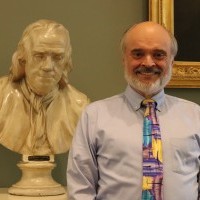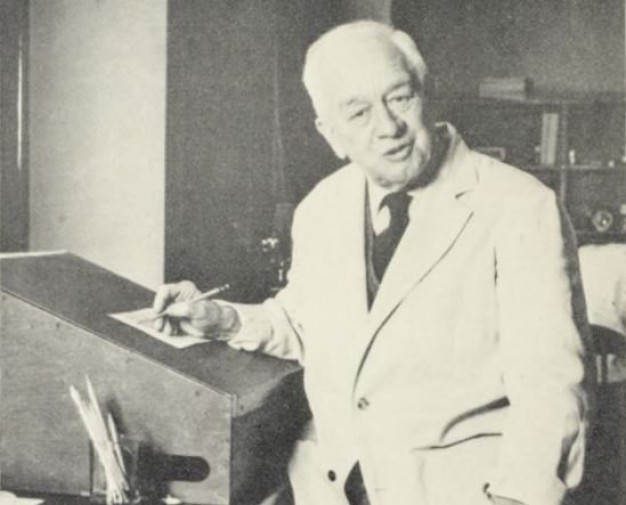Rous and Viruses
Header Image: Francis Peyton Rous. Picture courtesy of the Royal Society.
Letters are the type of document used most frequently by researchers who visit the APS. Letters useful to historians can contain any number of things of interest. Sometimes a letter is unexpectedly full of information.
Early in his career at the Rockefeller Institute, Francis Peyton Rous (1879-1970, APS 1939) did pioneering experiments to determine if infectious agents can cause cancer. Viruses were a known agent at the time, but they were mysterious, submicroscopic entities.. Beginning in the 1890s, they could be studied, using filtrates. Peyton Rous extracted tumors from chickens, created a solution of them and, in the key experiments, passed it through the filtrate, then injected the fluid into chickens. Tumors resulted.
Rous did the initial experiments with the help of one lab assistant. After Rous published two papers, James B. Murphy (1884-1950) entered the picture, providing dried tumor material that would eventually prove infectious. Murphy’s name did not appear as co-author on the first or the second paper, though in the second his work was mentioned in a footnote.
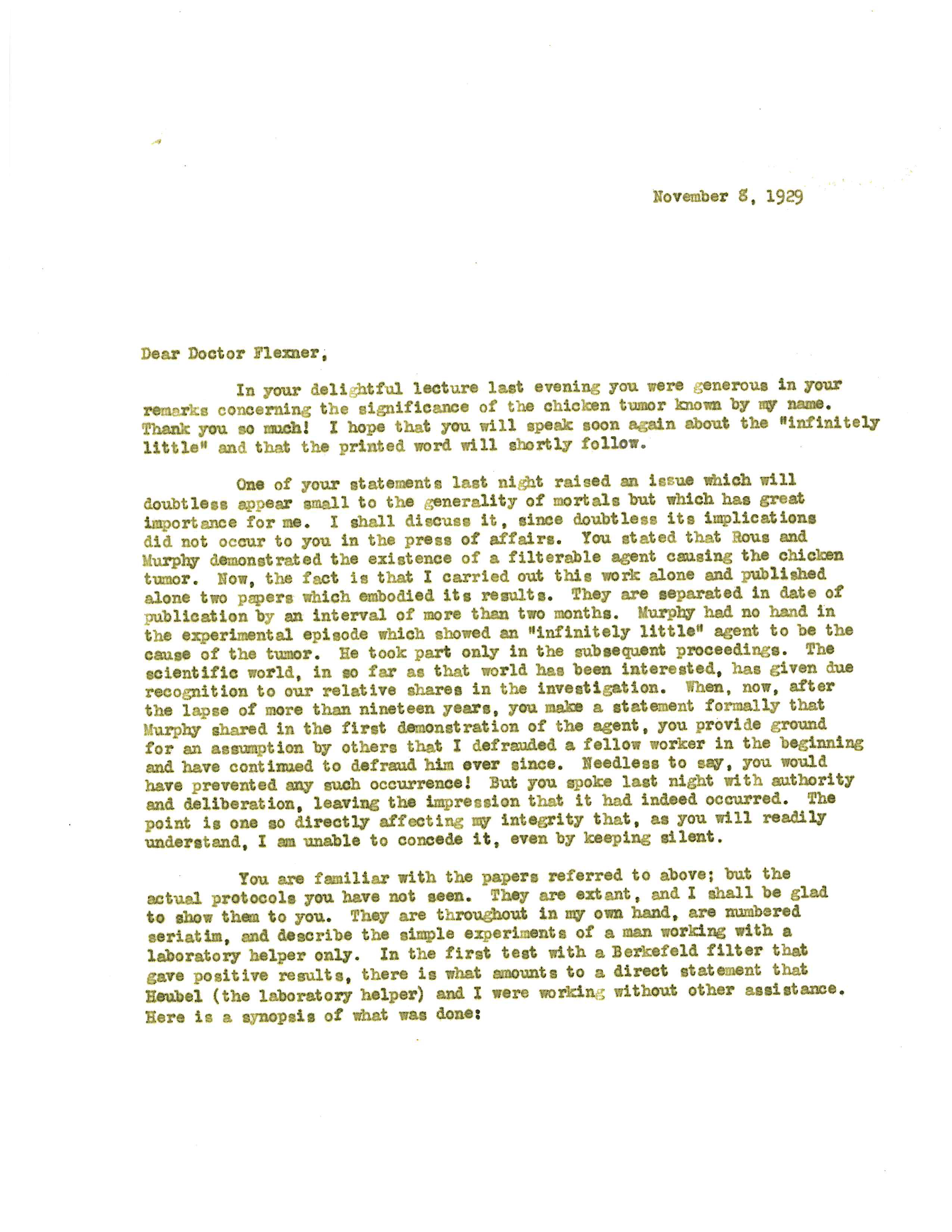
Nineteen years after the initial experiments and publications, head of the Rockefeller Institute Simon Flexner (1863-1946) gave a talk in which he credited both Murphy and Rous for the filtration experiments. In a letter, Rous takes Flexner to task for this error, as the issue was of “great importance” to him. Rous reminded Flexner that he had “carried out this work alone,” and that Murphy “took part only in the subsequent proceedings.” Priority disputes have had unfortunate histories in science, and this may be in part why Rous wanted to set the record straight. However the letter also stresses that, by crediting both Rous and Murphy, Flexner implied that Rous “defrauded a fellow worker in the beginning” and had “continued to defraud him ever since.” This worried Rous in that it seemed to make him look bad.
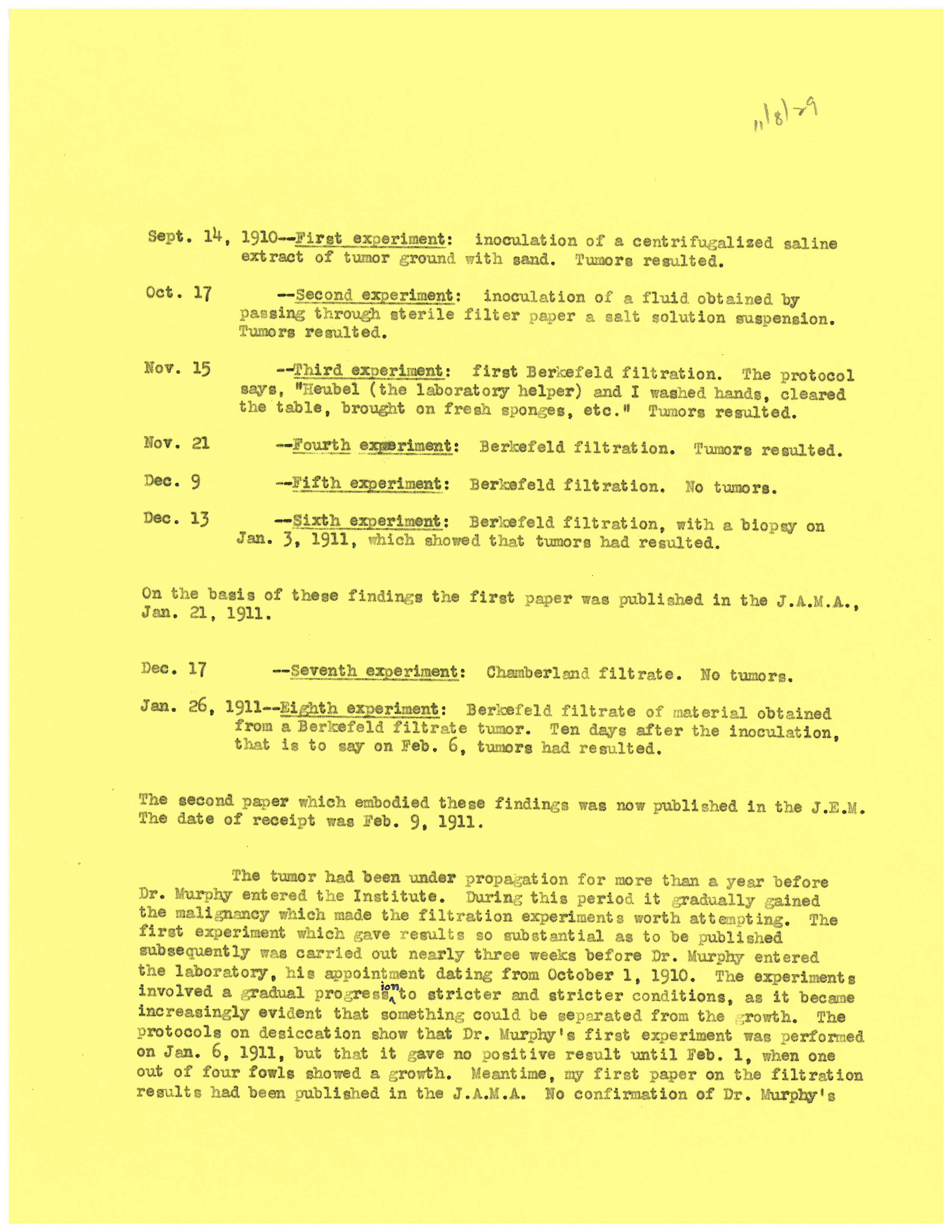
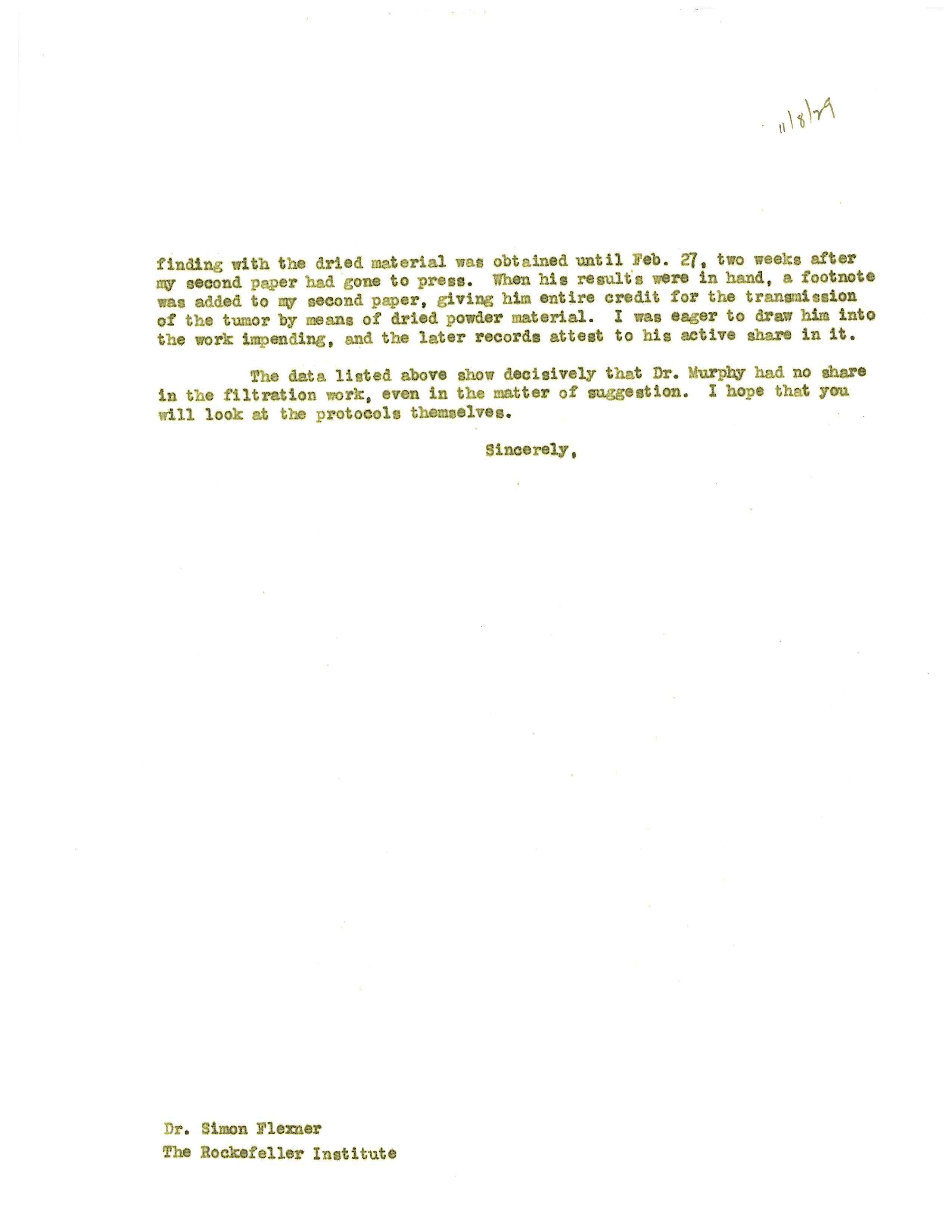
Rous went back to the original “protocols”—lab notes—and determined exact dates, procedures, and results. He included these details in his letter to Flexner to further set the record straight. Really, he sent what amounted to an interoffice memo, as they were in the same institution. Thus, in this inter-office note, sent years after the work was done, one finds a nearly exact timeline of a fundamental scientific discovery. Such are the surprises one can find in unexpected places in the archives.
Rous’ work was indeed known, but many did not accept it. For years there was no experimental proof that viruses could produce cancer in anything other than birds. But proof eventually did emerge. (Seven viruses are now known to cause cancer in humans). In the (very) long run, the scientific community eventually recognized Rous’ work, awarding him the Nobel Prize for Medicine or Physiology in 1966—55 years after he first published his results.

